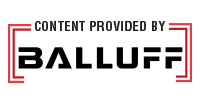
Critical assets are the lifeblood of the manufacturing plant. They are the devices, machines, and systems that when broken down or not performing to expected standards, can cause downtimes and production or quality losses resulting in rejects. If not maintained at the optimal levels of performance, these assets can damage the overall reputation of the brand. Some examples include evaporate fans, presses, motors, conveyor lines, mixers, grinders, and pumps.
Most manufacturing plants maintain critical assets on a periodic schedule, also known as preventative maintenance. However, in recent years, condition-based maintenance strategies, made possible with advancements in sensor and communications technologies, further improve the uptime, lower the overall cost of maintenance, and enhance the life of critical assets. Condition-based maintenance relies on continuous monitoring of key parameters of these assets.
Once the plant decides to adopt predictive maintenance (PdM) strategies for maintaining the assets, they face an important decision: to implement the condition monitoring strategy in-house or to outsource it to a third party – new term – continuous condition monitoring as a service (CCMAAS).
The bipartisan view expressed in this three-part blog series explores these options to help plant managers make the best, most appropriate decision for their plants. Just a hint: the decision for the most part is based on who controls the data regarding your plant’s critical assets.
In this part, we will delve a little deeper into the advantages and disadvantages of the CCMAAS option.
The advancements in cloud-based data management enable businesses to offer remote monitoring of the data related to the assets. In a nutshell, the service providers will audit the plant’s needs and deploy sensors and devices in the plant. Then, using IoT gateways, they transfer the critical parameters about the assets, such as vibration, temperature, humidity, and other related parameters to the cloud-based storage. The service provider’s proprietary algorithms and expertise would synthesize the data and send the plant’s maintenance personnel alerts about maintenance.
Advantages of outsourcing condition monitoring:
- Expertise and support: By outsourcing data management to a specialized provider, the plant has access to a team of experts who possess in-depth knowledge of condition monitoring and data analytics. These professionals can provide valuable insights, guidance, and technical support.
- Scalability and flexibility: Outsourced solutions offer greater scalability, allowing businesses to easily accommodate changing monitoring requirements and fluctuating data volumes.
- Cost reduction: Outsourcing eliminates the need for upfront investments in hardware and infrastructure, significantly reducing capital expenses. Instead, companies pay for services based on usage, making it a more predictable and manageable operational expense.
Disadvantages of outsourcing condition monitoring:
- Data security concerns: Entrusting critical data to a third-party provider raises concerns about data security and confidentiality. Plants must thoroughly assess the provider's security protocols, data handling practices, and compliance with industry regulations to mitigate these risks.
- Dependency on service providers: Outsourcing data management means relying on external entities. If the service provider has technical difficulties, interruptions in service, or business-related issues, it may impact the organization's operations and decision-making.
- Potential data access and control limitations: Plants may face limitations in accessing and controlling their data in real-time. Reliance on a service-level agreement with the provider for data access, retrieval, or system upgrades can introduce delays or restrict autonomy.
Just like critical assets are the lifeblood of manufacturing plants, in the near future, data that is being generated every second in the plant will also be equally important. Outsourcing does allow manufacturing plants to adapt quickly to the new normal in the industry. I would not completely discount outsourcing based on the control of data. The option does have its place. You will just have to wait for my concluding blog on this topic.
In the meantime, your feedback is always welcome.